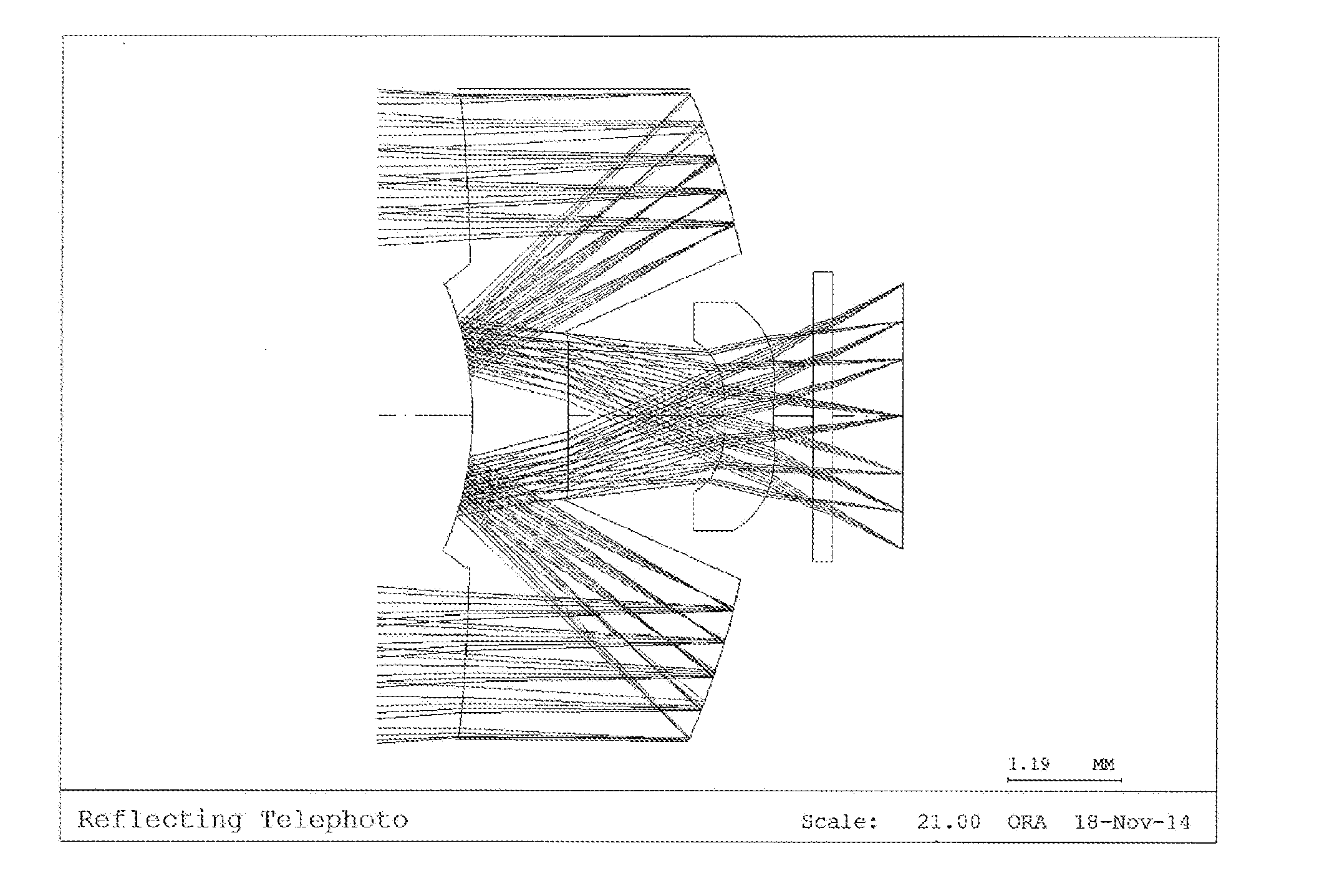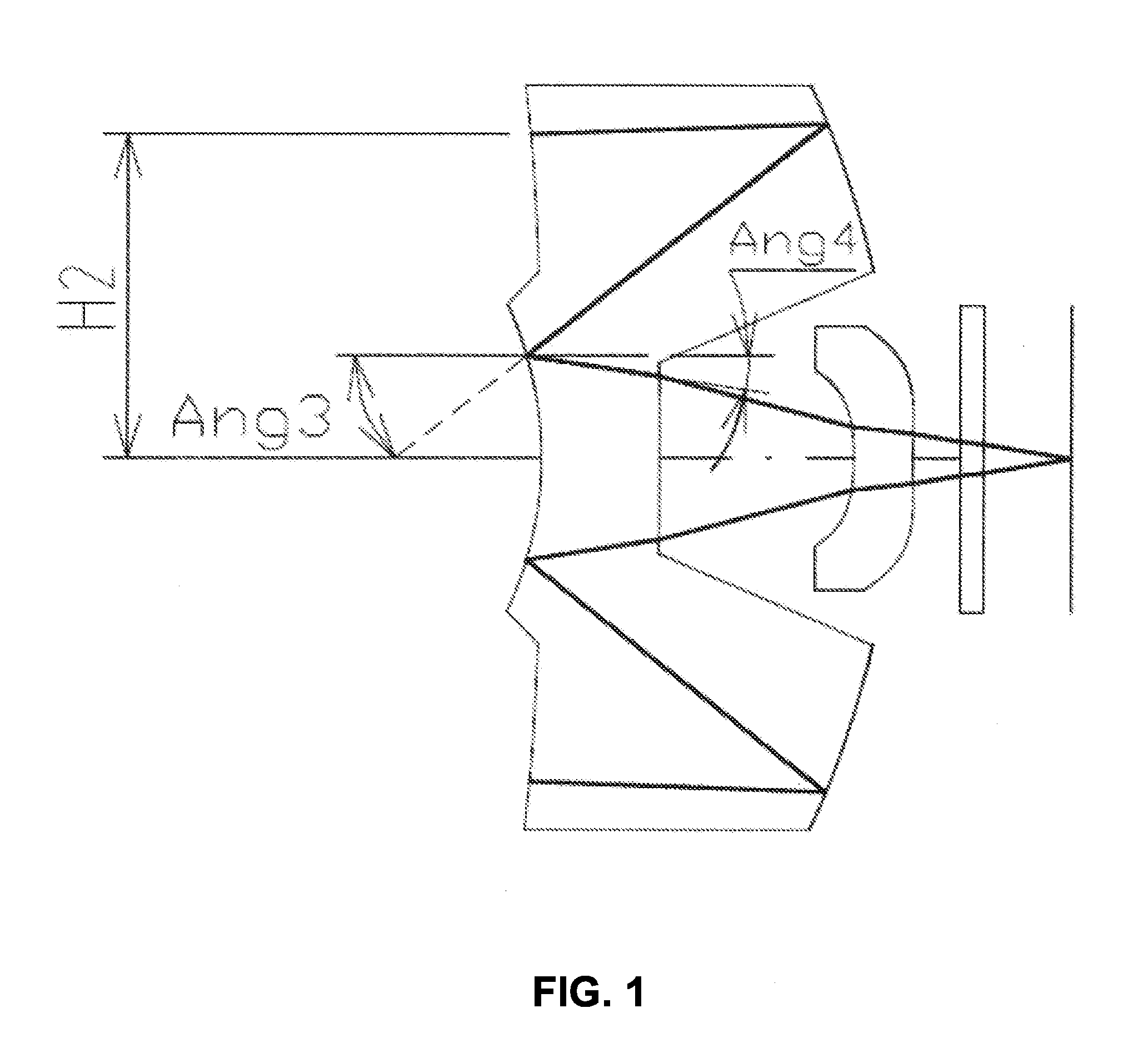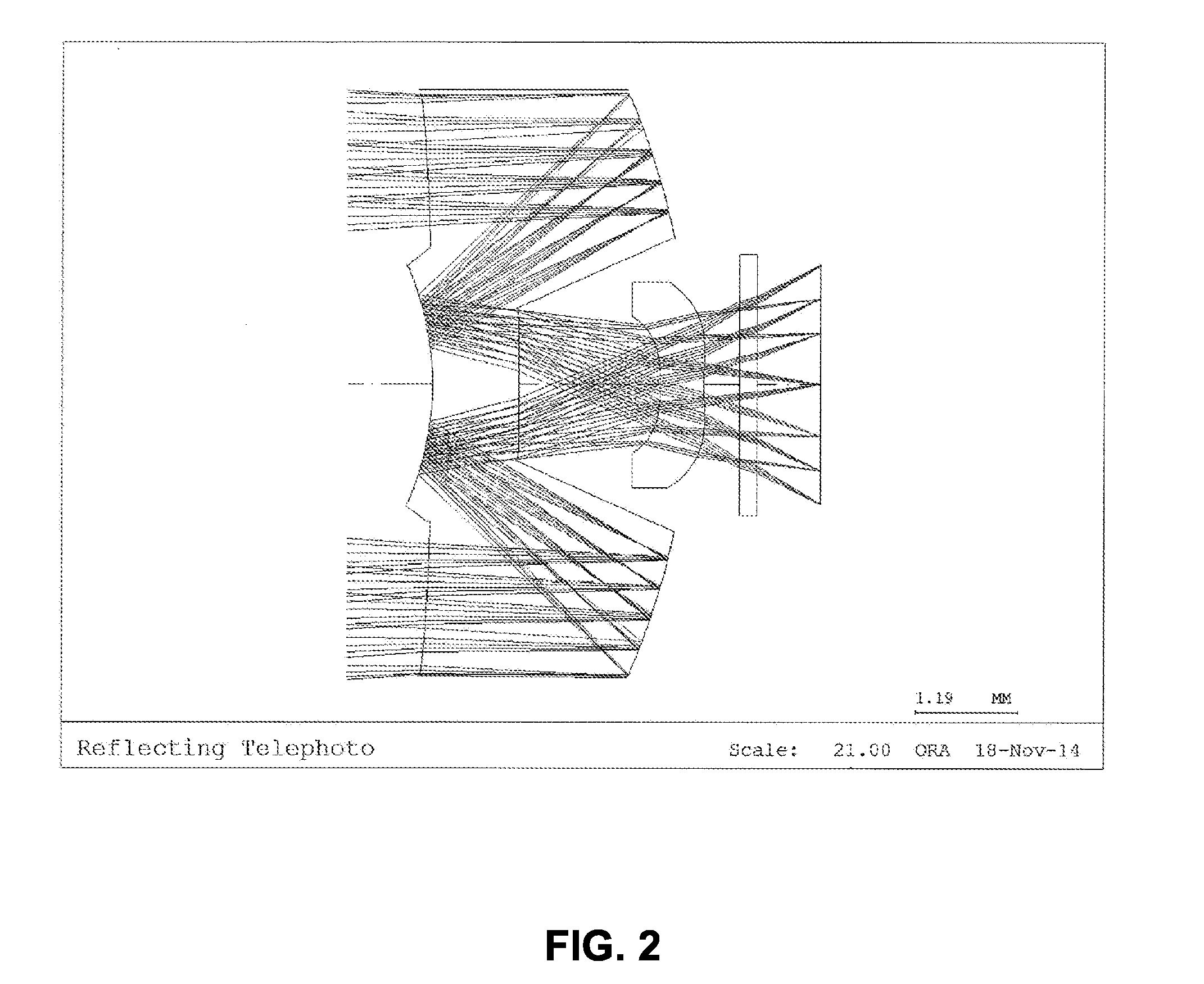Iris recognition lens system
- Summary
- Abstract
- Description
- Claims
- Application Information
AI Technical Summary
Benefits of technology
Problems solved by technology
Method used
Image
Examples
first embodiment
[0058]FIG. 2 a diagram illustrating a first exemplary embodiment according to the iris recognition lens system of the present invention.
[0059]As illustrated in FIG. 2, a first lens is disposed on an optical axis at a predetermined distance from an object, and a second lens compensating for imaging is additionally disposed at a position facing a transmitting area of a rear part of the first lens.
[0060]Table 1 below presents data about the lens constituting an optical system according to the first embodiment of the present invention.
TABLE 1SurfaceTHINo.RDY1)(thickness)Nd2)Vd3)R / T4)OBJINFINITY2501INFINITYTTL / f AIR0.50823692−80.2549631.53155.8T5)STO−8.14847−2.994241.53155.8R6)4−3.0905111.53155.8R6)5−8240.770381.650175Air6−2.834730.51.53155.8T5)75.489480.414821Air8INFINITY0.2BSC7_HOYAT5)9INFINITY0.739662IMGINFINITY−0.003Notes)RDY1): RDY (radius of curvature),Nd2): Nd (refractive index),Vd3): Vd (Abbe number),R / T4): Reflection / Transmission,T5): Transmission,R6): Reflection(OBJ: Surface of...
second embodiment
[0070]FIG. 4 is a schematic view illustrating a second exemplary embodiment according to the iris recognition lens system of the present invention.
[0071]As illustrated in FIG. 4, a first lens is disposed on an optical axis at a predetermined distance from an object, and a second lens compensating for imaging is additionally disposed at a position facing a transmitting area of a rear part of the first lens.
[0072]Table 4 below presents data about the lens constituting an optical system according to the second embodiment of the present invention.
TABLE 4SurfaceTHINo.RDY1)(thickness)Nd2)Vd3)R / T4)OBJINFINITY2501INFINITY0.482369AIR2−82.9176431.53155.8T5)STO−8.03947−2.994241.53155.8R6)4−2.780391.51.53155.8R6)5−25.607291.788945Air6−0.859860.41.53155.8T5)7−2.052570.90144Air8INFINITY0.2BSC7_HOYAT5)9INFINITY0.719449IMGINFINITY−0.003Notes)RDY1): RDY (radius of curvature),Nd2): Nd (refractive index),Vd3): Vd (Abbe number),R / T4): Reflection / Transmission,T5): Transmission,R6): Reflection(OBJ: Surfa...
third embodiment
[0082]FIG. 6 is a schematic view illustrating a third exemplary embodiment according to the iris recognition lens system of the present invention.
[0083]As illustrated in FIG. 6, a first lens is disposed on an optical axis at a predetermined distance from an object, and a second lens compensating for imaging is additionally disposed at a position facing a transmitting area of a rear part of the first lens.
[0084]Table 7 below presents data about the lens constituting an optical system according to the third embodiment of the present invention.
TABLE 7SurfaceTHINo.RDY1)(thickness)Nd2)Vd3)R / T4)OBJINFINITY2501INFINITY0.482369AIR2−87.1647731.53155.8T5)STO−7.89313−2.994241.53155.8R6)4−2.666691.51.53155.8R6)5−708.625041.28214air6−0.932390.51.53155.8T5)7−2.40820.198294air8INFINITY0.2BSC7_HOYAT5)9INFINITY1.171931IMGINFINITY−0.003Notes)RDY1): RDY (radius of curvature),Nd2): Nd (refractive index),Vd3): Vd (Abbe number),R / T4): Reflection / Transmission,T5): Transmission,R6): Reflection(OBJ: Surface...
PUM
| Property | Measurement | Unit |
|---|---|---|
| Fraction | aaaaa | aaaaa |
| Length | aaaaa | aaaaa |
| Diameter | aaaaa | aaaaa |
Abstract
Description
Claims
Application Information
 Login to View More
Login to View More - R&D
- Intellectual Property
- Life Sciences
- Materials
- Tech Scout
- Unparalleled Data Quality
- Higher Quality Content
- 60% Fewer Hallucinations
Browse by: Latest US Patents, China's latest patents, Technical Efficacy Thesaurus, Application Domain, Technology Topic, Popular Technical Reports.
© 2025 PatSnap. All rights reserved.Legal|Privacy policy|Modern Slavery Act Transparency Statement|Sitemap|About US| Contact US: help@patsnap.com



